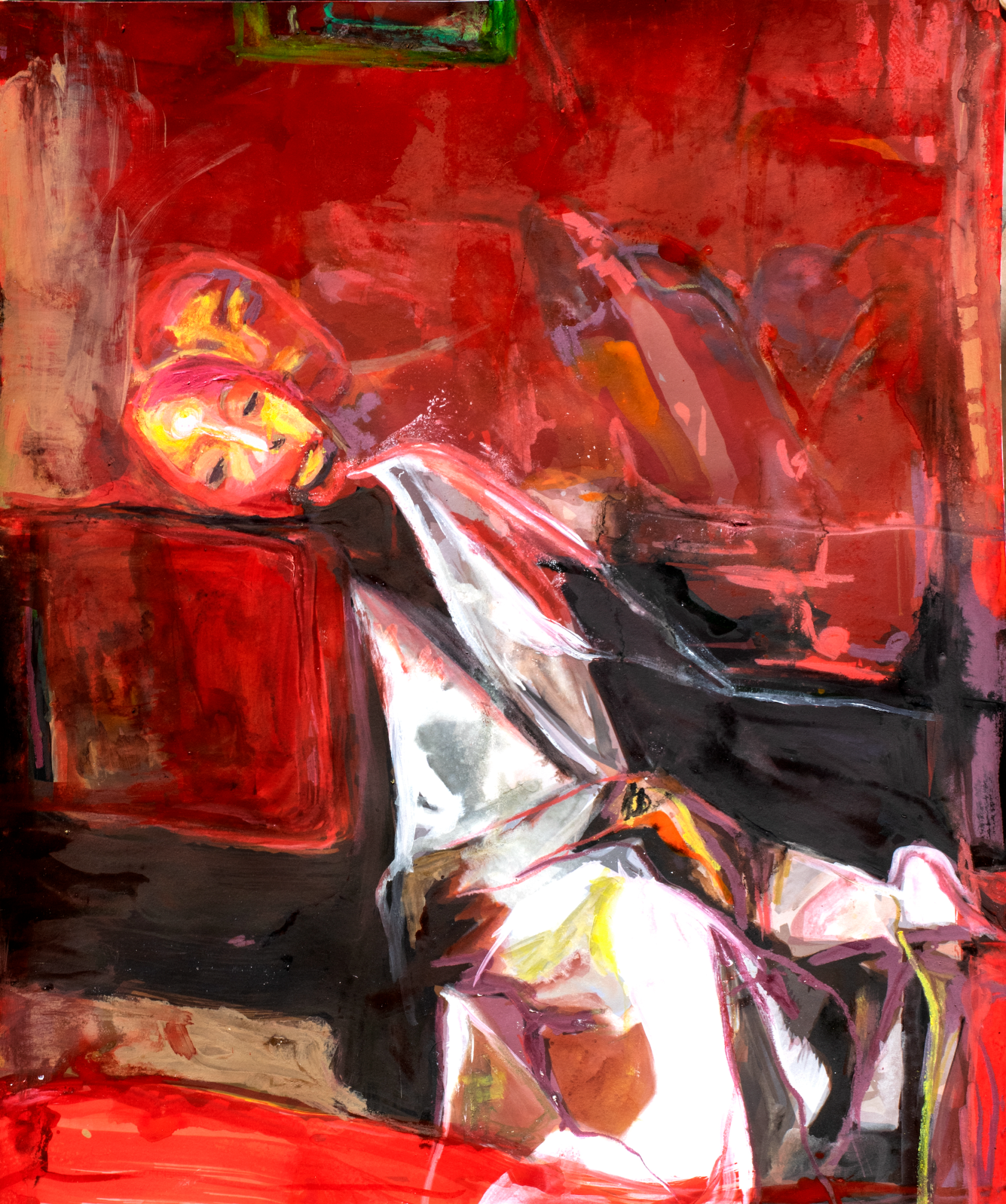If fashion adorns the body, art adorns space. By way of Home As Corpus, a new exhibition presented by multidisciplinary fashion label Head of State (founded by Feek Abijako) and curated by Diallo Simon-Ponte, the two come together to bask in a three-day embrace.
On view September 13-15, the exhibition is an expansive expression of Head of State’s SS24 collection and a sequel of sorts to the brand’s last runway show, titled “Memories of Home”, which was densely packed with referential material harkening back to Feek’s familial lore — namely his father’s migration from Nigeria to Spain. The collection sought to locate a visual, conceptual and discursive “middle-ground” between the emotional and psychological vestiges of his Nigerian upbringing, and how it has been coloured by his relocation to the US. Likewise, Home as Corpus brings together the work of Oluwatobiloba Ajayi, Nola Ayoola, Cameron Granger, Lewinale Havette and Isabel Okoro; all of whom are negotiating their own diasporic straddles.
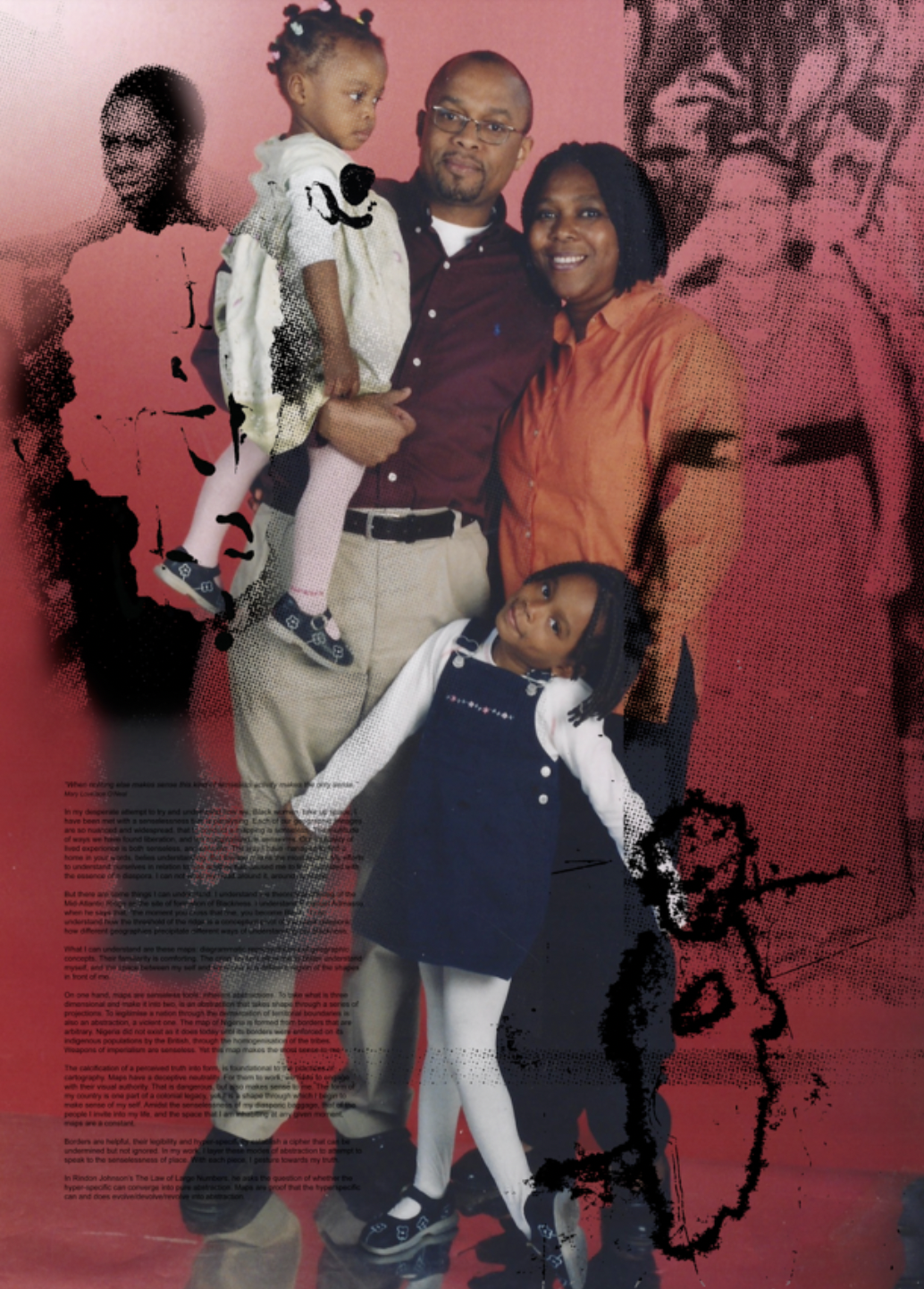
Through painting, photography, film and sculpture, the exhibition seeks to refract the often narrow beam of our conceptions of home. Exceeding geography alone and opting instead for a more tactile and enfleshed definition, Home as Corpus gives credence to embodied knowledge, taking seriously the ways that, as noted by Diallo, “the passage of time has engraved and sculpted lineage into our material existence”. It posits the physical body as a locus through which we may seek our own perpetual homecomings.
Below, Diallo and Feek reflect on their respective routes to design and curatorial work; the genesis of the exhibition; the arc of possibilities enabled by creative dexterity (specifically those enabled by taking on both runway and gallery); and the joys of working with a co-conspiratorial ethic.

Let us consider fashion and art as technologies of expression for a moment — each are tools of adornment: the former adorns the body, which in turn adorns space; the latter adorns space, which in turn adorns the body. Both then, work on our imaginations in different ways, but towards common ends. Feek, what calls you to fashion, to adorning the body? And Diallo what calls you to curatorial work, to adorning space? Subsequently, what called you to hold both in the same frame by way of Home as Corpus?
Feek: My earliest memory of fashion stems from my family. My dad was a designer in the early 90s and early 2000s. He worked with both Western and traditional Yoruba garments. But I didn’t grow up wanting to be a fashion designer. I was interested in more technical things like being a pilot or an architect. But fast forward, when I came to the US, I had a story I wanted to tell through design. I realised that a US conception of fashion design was way more commercial and different from the community-oriented space I grew up in. Like, people would come to my dad’s studio and he would make custom outfits for them, even people who couldn’t afford it, all in the name of celebrating our shared power of expression. We lived in the intention behind it. I grew up on intentional fashion, so I wondered: if I want to go into this, how do I go about it in a way that gives credence to the principles of my upbringing?
I see fashion as a way to story-tell about people I care about, the people I grew up with, and people who look like me. Down the line, I’ll use other mediums to make the story way more cohesive.

Diallo: Like Feek, I’ve always had a love of architecture, but particularly since moving to New York City it’s been really, really fascinating to come to understand my body in relation to what different cities offer architecturally speaking. I’ve always been intrigued with how exhibition design can do that as well. I think about going to see Richard Serra’s work at Dia Beacon and how they always have this certain presence with one’s body. I love the curvature that Serra plays with in his larger ironworks. These things bring up questions like how does your body manifest as you understand yourself in relation to the art object?
Where Home as Corpus is concerned, I came into the process at a point when Feek and his team had already gathered a tremendous amount of foundational material that I was able to build off of. We share this discursive understanding and the questions I had already been asking myself just slotted in seamlessly. For me, I was interested in making the exhibition a narrative journey that picked up where the “Memories of Home” show left off. So, with this exhibition, I wanted to probe what happens when one leaves a physical space and how that manifests new definitions.
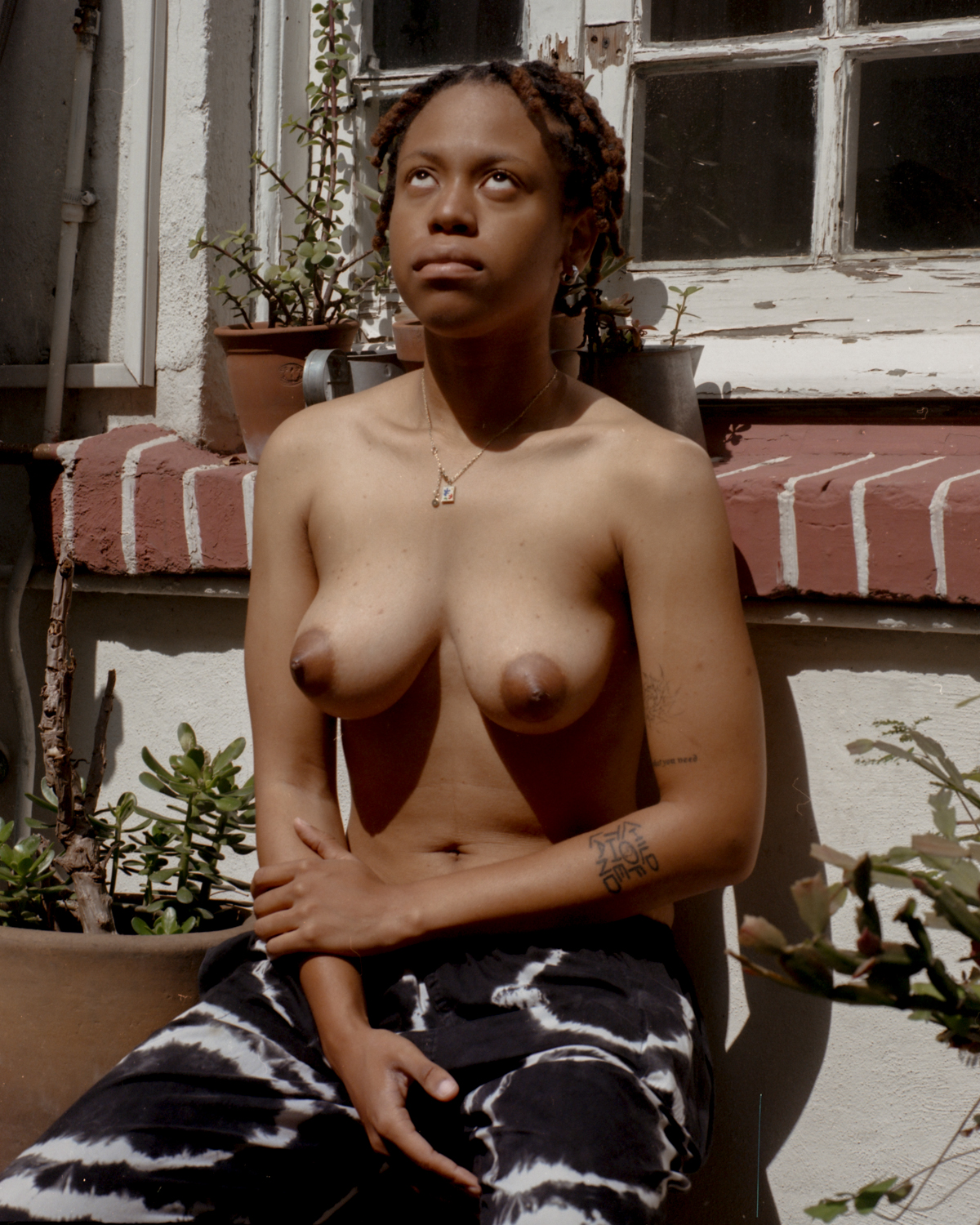
Feek: This is our second exhibition that we’ve put on as part of the brand. I’ve always been fascinated with how the final product a designer or an artist makes is very important, but the thought process is just as important. I think about different ways that we can get people to engage with the work itself and also the unseen intellectual labour behind it. This exhibition came about with that question in mind, and then Diallo came in and completed the sentence.
We spoke a lot about my father’s journey in terms of how his departure from Nigeria actually redefined the social organisation of the space itself. Before leaving, he was the head of an organisation that previously only allowed the male heads of each household to attend and participate in dialogue around how the community could be bettered.
After he left, my mother stepped in to take his place. She was the only woman in the group, which fundamentally restructured how it operated. She redefined what a leader in that space can look like and created a space that allowed everyone to be a bit more vulnerable. She isn’t literate so I stepped in and took notes for her. This informed how I understand the importance of documenting conversations that later spark change as it relates to our definitions of home. The conclusion of all these conversations, and more, is materialised in this exhibition.

Feek, I’m interested in hearing you speak about evading expectations. With Home as Corpus, you look beyond the runway as the sole stage for your ideas as a designer. What possibilities has this opened for you?
Feek: I personally don’t believe in the current system of having to do multiple collections in a year and giving it four to six months for each collection. I respect designers who do it, but it’s not enough time for the way I prefer to work, which is a method based on dialogue. We don’t start off knowing exactly what we’re going to do. It starts with dialogue and whatever comes out of that is what we ended up doing. If you trace our work from the genesis of the brand until now, it feels like a long, ongoing dialogue. It’s like you’re reading one book and each chapter comes with an extension of what happened in the chapter before. Moving at a slower pace does the story I am trying to tell justice.
What an exhibition does is create that slow-down moment for the audience to really take a step back. It allows us to conjure a much broader range of feelings towards a subject. One of the biggest parts of humanising a person or a narrative in general is by creating that broader range of emotions. You want to create the sad moments, you want to create the happy moments, you want to create the moments in between. When you combine all that range into one narrative, you really humanise a story.
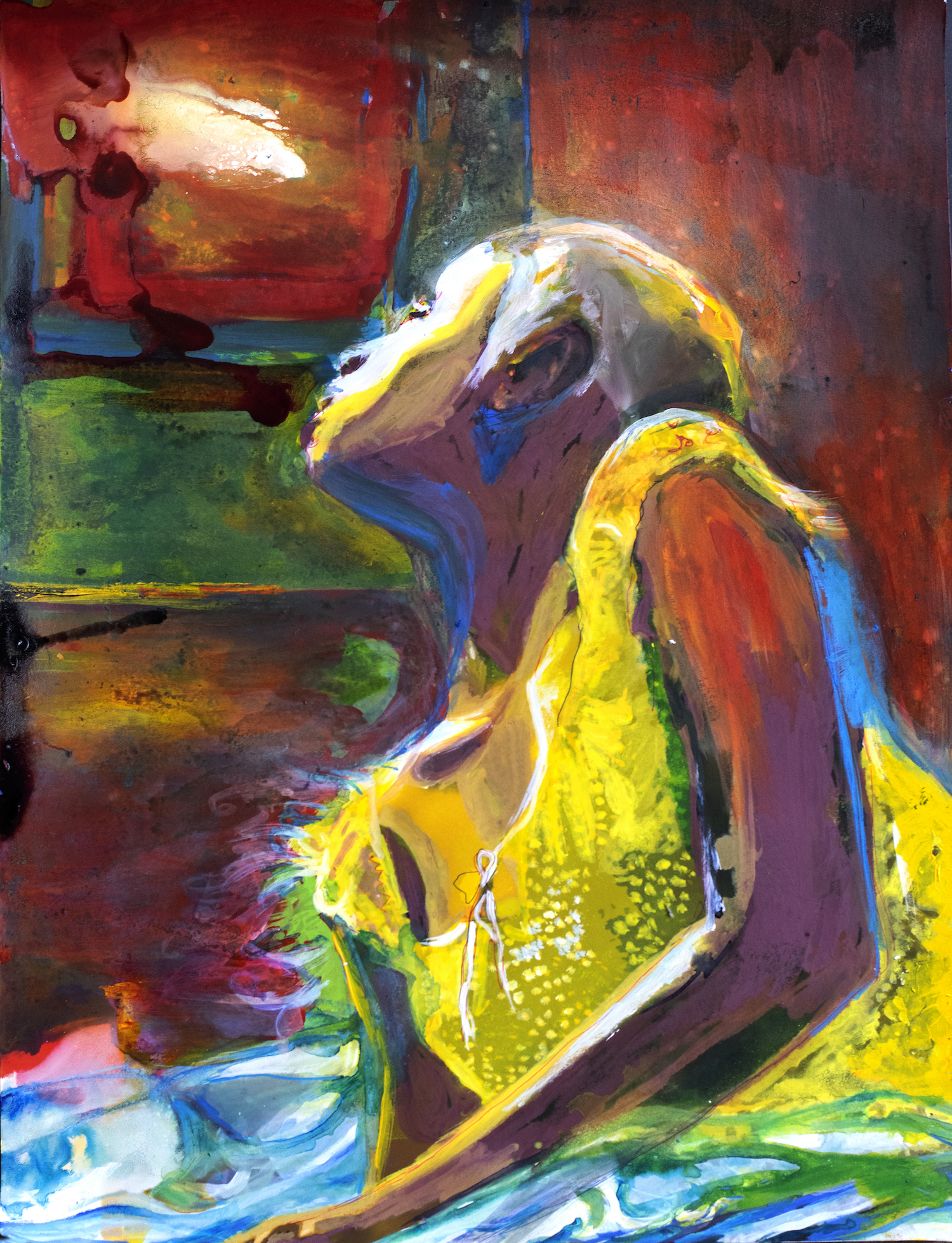
Diallo, What did your research process entail? What texts and people were you consulting?
Diallo: Edouard Glissant’s work was the first reference point. Before I opened Glissant, I stumbled upon a Fred Moten blurb about one of his books that led as a departure point for me, for this relationship to home as corpus. “What The Sands Remember” by Vanessa Agard-Jones and “Life Between Islands”, which is an exhibition catalog that the Tate did, were important texts too, as was “Romance in Marseille” by Claude McCay. Each of these texts, as well as their arrangement together in my mind, allowed me to pull and coalesce each of these threads and begin to shape the world Feek and I have been building with this exhibition.
What “Life Between Islands” and Vanessa Agard-Jones gives is this entry point to thinking about how the environment and the land begins to shape the physical features of our bodies or how our bodies remember. Julia Smith, the author of the essay in “Life Between Islands” talks about how as colonialism seeps through the Caribbean, seeds and animals and people were brought over, which altered the ecosystem of these islands. “Romance in Marseille”, in short, is about someone who really loved to dance and is now living in Marseille but is from a region in West Africa. He writes about the grass from his native land, the affectionate relationship that his feet had with the grass and how he misses that.
This exhibition has also come forth, incredibly so, in dialogue with community. Getting to know Feek’s team and seeing how they all stick together and feed off of each other was special. It’s a really familial community.

In her landmark text Glitch Feminism, Legacy Russell writes about how the body is the material site that gives form to abstract ideas of gender and race, which of course influence our relationships to and memories of home. She posits that the body carries social, political and historical discourses that feed into a set of constricting assumptions about said body. The “glitch,” then, is a vehicle through which we may refuse those constricting assumptions.
In this exhibition, it seems as though you are “glitching” how we think about home. (that is, pushing beyond the notion of home as solely a physical or geographical locale or structure). I wonder, then, because this exhibition holds body and home together, if it serves as a way to “glitch” what we mean when we say “body” too?
Feek: Me being a Nigerian, what being Black means to me is different from how a Black American or someone from Europe or the Caribbean understands it. Glissant’s idea of creolisation helped me think thought blackness and Black culture in relation to immediate space and how migration as a result of colonialism or otherwise shaped the cultural production of the diaspora, how the importation of new knowledge, new tools, new food and whatnot, creates that sort of glitch or divergence you’re speaking of.
And I think what’s very interesting about the artists Diallo selected; they’re all thinking about this multitudinal narrative of Black ontology, which goes back to that idea of the glitch too.
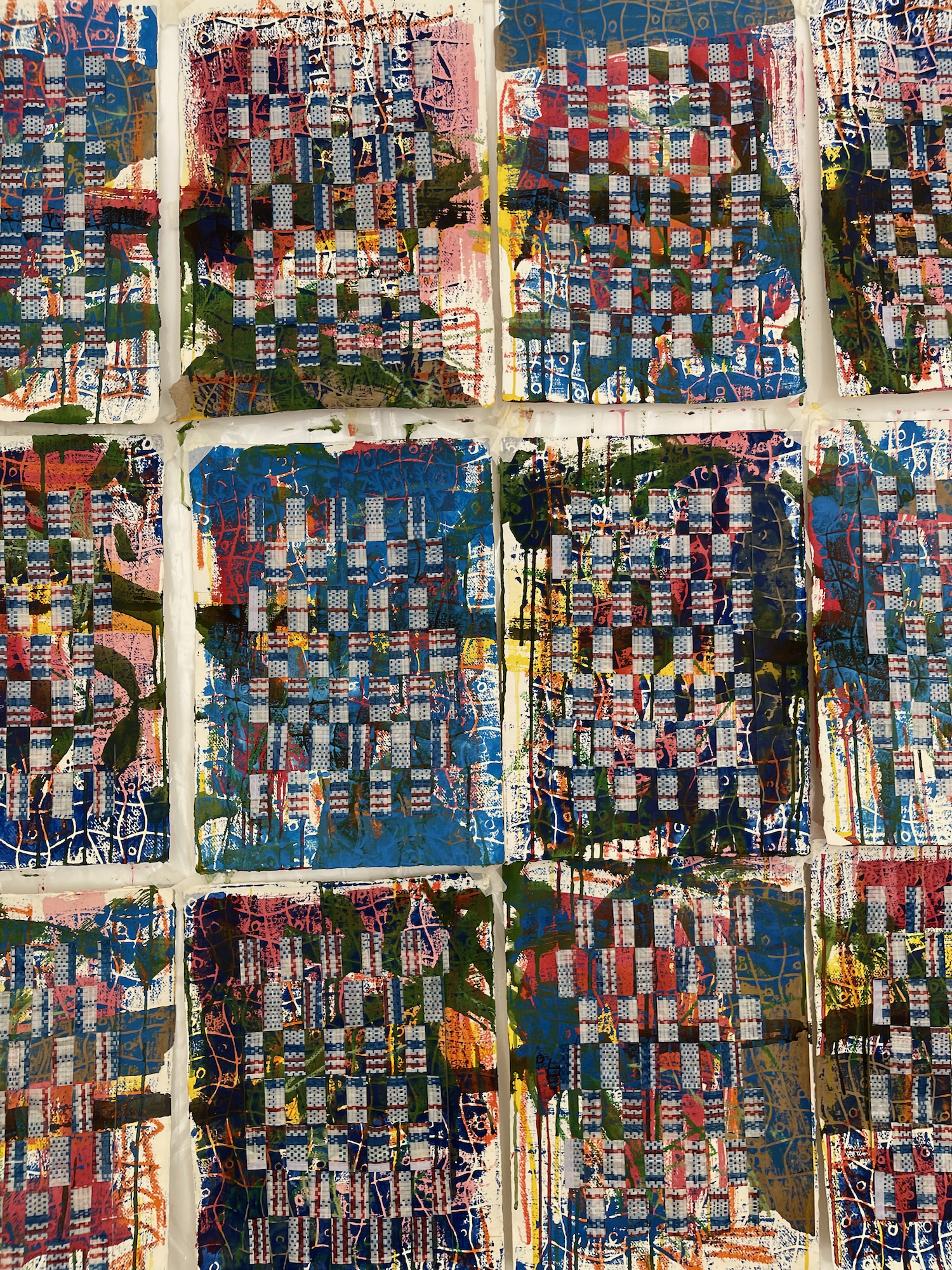
Diallo: History glitches the corporeal. It reorients one’s body. For instance, Isabel’s work is a series of self-portraits with accompanying texts, which serve to take stock of her mind. It feels like she is asking her body to be the landscape of her mind. Even Lewinale Havette’s work, which is fantastical and surreal, figures a body going through a sense of metamorphosis. In an abstract sense, we can look to Nola’s work. There is no figure in her contribution to the exhibition so it speaks to migration more obliquely, but with that same attention towards examining the consequences and inheritances of rupture and fracture.
Of course, collaboration and co-dependence has been a central part of your mode of working. I am interested, though, in framing that collective labour as “co-conspiring”. The root of the word “conspire” alludes to breathing, and so I wonder if each of you can speak to the experience of, quite literally, “breathing life” into this exhibition together?
Feek: I love how this question was framed because working with Diallo has felt like breathing. I want to call back to Glissant, the Godfather of Creole, again for a moment. We can think about how Creole came about through the convergence of African, European and West Indian people breathing the same air. And eventually, through their sustained intermingling gave birth to a new language. And so in a way, in every collaboration I go into, I’m always looking for my Creole, like, what is that new language? I think Home as Corpus is our own definition of a kind of Creole-esque impulse, which has arisen from our breathing, reading, writing and talking together. I don’t feel satisfied until I know we came up with a new language and right now, I feel more than satisfied.
Diallo: I feel the exact same. The ambition of what we have undertaken in a month and some change cannot really be understated. If we weren’t all breathing together and supporting each other through this, it couldn’t have come to fruition as it has. We have been breathing with the artists too and our broader network of community, as both Feek and I articulated before. The exhibition itself is also part of this collective breath as we have allowed it to be amorphous and ever-changing. The exhibition text, for example, was being modified up until the moments before our deadlines.
I love this new Creole that we have put forth through breathing in tandem.
Credits
Images courtesy of the artists Oluwatobiloba Ajayi, Nola Ayoola, Cameron Granger, Lewinale Havette and Isabel Okoro.
